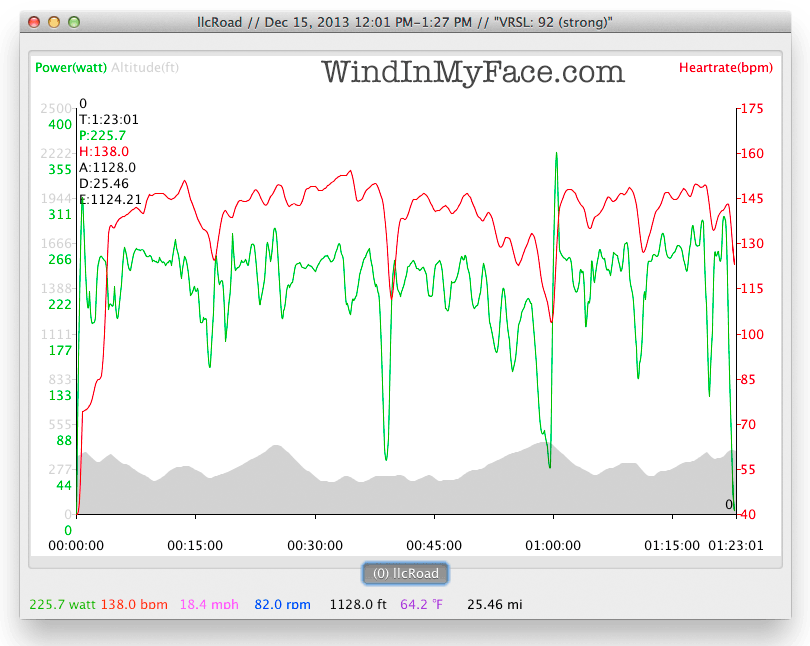
$220 SAVE $130 = 37.0% Western Digital 16.0TB Western Digital Ultrastar DC HC550 3.5-in… in Storage: Hard Drives
|

|

|

|

|
Gauging Fitness with a Power Meter
Tacking the average heart rate over a known course at a particular power level can show steady fitness gains: when the heart rate drops ove time for the same workout, it shows a fitness gain (assuming similar conditions like temperature). In my case I’ve seen a ~15 beat reduction in heart rate for the same power output over four months of training (December to April).
That heart rate drop for same course/same power indicates a substantial adaptation to rigorous training. While I feel the adaptation from the obvious huge improvement in fatigue when done (December was hard), only the data of heart rate and power can show it objectively. That is a powerful psychological feedback loop.
Example
After nearly 4 months of training, compare the metrics:
Dec 15: 226 watts @ 138 bpm, 1:23
Apr 10: 254 watts @ 133 bpm, 1:14
The difference is compelling: 28 watts higher output at a heart rate 5 beats lower. That represents a major fitness gain.
One could utilize time and heart rate as well for such a fixed length course, but time is influenced by wind conditions, whereas power is not; power (watts) provides an objective metric independent of other factors.
Toggle the graphs below to compare.

Seagate 22TB IronWolf Pro 7200 rpm SATA III 3.5" Internal NAS HDD (CMR)
SAVE $100



